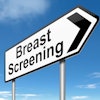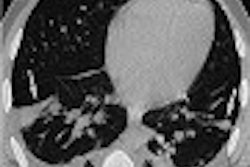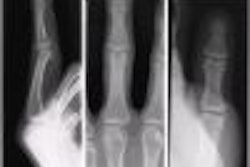
AuntMinnie.com is pleased to present Part IV of our series, Turf Wars in Radiology.
In June, the American Medical Association announced its support for universal ultrasound reimbursement regardless of whether exams were performed by an imaging professional. The radiology community was less than thrilled. In theory, those who specialize in obstetric and gynecologic imaging would be most affected by this move and would have a vested interest in protecting their areas of expertise.
But taking a defensive position over obstetric and gynecologic ultrasound turf is futile; staying focused on what both imaging and ob-gyn can respectively contribute to the field promotes a collaborative environment, according to Dr. Beryl Benacerraf.
By maintaining this proactive perspective, she believes that radiologists can maintain harmonious relationships with their ob-gyn colleagues.
"Obstetricians need to be involved in obstetrical ultrasound because the patients are their patients," said Benacerraf, a radiologist at Massachusetts General Hospital and Brigham and Women’s Hospital in Boston. "If radiologists dig in their heels and block obstetricians’ participation, radiologists will lose the business. We all have to work together."
Benacerraf, who also is clinical professor of obstetrics, gynecology and reproductive biology at Harvard Medical School, has found that one way to sidestep the turf issue entirely is for radiologists and obstetricians to work together in joint units. In her practice at Brigham, she has two partners, both obstetricians. The revenues are shared.
"I train radiologists and ob-gyns in ultrasound," she said. "I see the value of both specialties. Radiologists have a lot to contribute because they’re the imaging specialists. Obstetricians are the clinicians that bring in the patients. They know what’s important from the clinician’s point of view. Obstetricians know what to look for, but not how to image it. Radiologists know how to image it but not what to look for."
"It works beautifully because all partners bring their respective expertise," she said, expressing concern about the defensive strategy she has seen among some radiologists. "I’ve never had problems with turf battles because I’m inclusive."
Dr. Rebecca Smith-Bindman echoed the emphasis on collaboration. Smith-Bindman is an assistant professor of radiology, epidemiology, and biostatistics at the University of California, San Francisco.
"We have a lot shared interests, and our different areas of expertise work well together," she said. "Those who should be doing sonography in high-risk pregnancies are those with a lot of skills, regardless of their specialty."
When she was in private practice, Smith-Bindman said that she was affiliated with a practice that focused on high-risk obstetrics. In this setting, the perinatologists and radiologists shared ultrasonographers.
"I was impressed with the way they shared expertise," she said. "This is the best model. The obstetricians knew the patients best, and the radiologists knew the abnormalities and syndromes that were spotted on the ultrasound. The collaboration worked to the benefit of physicians and patients alike."
Obstetricians champion in-house ultrasound
However, some ob-gyns would prefer to do the routine obstetric and gynecologic ultrasonography themselves, in the clinical setting. They see a radiologist as a resource for x-rays and for complicated scenarios.
Dr. F. Ralph Dauterive said the argument that only radiologists should read ultrasounds was self-serving. "To argue that only a radiologist is the only one that can read a scan… is protective of the practice of radiology, not of the patient," said Dauterive, chair of obstetrics-gynecology at Ochsner Clinic Foundation in Baton Rouge.
"Radiologists want everything done in their imaging centers," he said. "The clinicians are conflicting with the radiologists. I think their true expertise is interpreting complex studies. But the clinicians want routine procedures in their hands."
In general, he believes that ob-gyns have no interest in several types of imaging procedures.
"When it comes to shooting x-rays, most ob-gyns are happy to let radiologists manage the machine, the technicians, and the films," Dauterive said. "We’re comfortable with radiologists doing CT scans, mammography, MRIs."
"The area of conflict is ultrasound, both obstetrical ultrasound and gynecologic ultrasound," Dauterive said. "We’re capable of doing and interpreting these exams. When we do these images, the instrument is in the hand of the clinician, and we can get the results back to the patient in a timely manner."
Timely turnaround is particularly important when the physician identifies a potentially ominous lesion in an examination, he said. "I can’t count on my hand the number of times I’ve felt something in a pelvic exam, scanned the area, and had an answer within five to ten minutes," Dauterive said. "When we involve a radiologist, we have to schedule the exam and read the report, rather than seeing the film."
From the patient’s perspective, in-house ultrasound, particularly with a transvaginal probe, means one fewer person seeing her in a state of partial undress.
Dauterive questioned the motives of radiologists’ concern regarding self-referral. "I’ve never had a radiologist call me up and say, ‘This thousand-dollar MRI isn’t necessary. Why did you order it?’" he said. "If the radiologists are getting reimbursed for it, they’re going to do the test."
Enforcing the medical necessity bar is difficult enough with obstetric ultrasound, since many patients use the procedure to determine the sex of the baby, and parents with means will pay cash even if an insurance company won’t reimburse for it, he added.
Dauterive was skeptical of the group model espoused by Benacerraf and Smith-Bindman. "The problem with groups is that everyone wants to get paid what they’re worth," he said. "Most group compensation boils down to production, and within group models there are production politics that are very interesting. Even if people say the focus is on quality, the production politics can devolve so that people become turfy about their respective specialties."
Like Dauterive, Dr. Elizabeth Stevenson’s practice does routine ultrasounds in-house, with ultrasound technicians performing the ultrasound and ob-gyns reviewing the images. Problematic findings are typically referred to perinatologists. Bone mineral densitometry (BMD) screenings for osteoporosis are also performed in the clinic setting, she said.
"We don’t need a radiologist for BMD. The information is fed into a computer, and the patient is given a T-value," said Stevenson, an ob-gyn in private practice in Dallas, where she is a staff physician at Baylor University Medical Center. "We don’t necessarily deal with radiologists for that."
She finds radiologists helpful for diagnosing ectopic pregnancies with ultrasound, though "that’s where the relationship is tenuous, because it’s hard to get the radiologist to commit to a diagnosis," she said. "It works best when we know the radiologist very well and they’re able to give the interpretation in language that is useful to us."
This call for fine-tuning the way radiology is practiced to the obstetrics context has been advocated by others, most recently in an article in European Radiology.
"Radiologists involved in (obstetrics) must have the appropriate training and expertise to match the type of investigation or screening procedure to be undertaken. There should be an explicit understanding of this training and expertise both for the referring obstetrician and expectant mother," stated author Josephine McHugo (European Radiology, 2001, Vol.11:11, pp. 2156-60).
Stevenson expressed concern about the phrase "cannot exclude" coming back in a radiology report. "This binds the ob-gyn to follow up and exclude potentially serious diagnoses," she said. "It’s a trickle-down of defensive medicine."
She said that, in her practice, radiologists play a role if a routine ultrasound comes back with abnormal findings, such as a placenta with a disadvantageous location or poor quality, or in the realm of gynecology, a suspicious lesion found on transvaginal ultrasound. She expressed satisfaction in the relationships between radiologists and ob-gyns at Baylor.
Pick up the phone
Often misunderstandings between radiologists and ob-gyns, such as the ominous phrase "cannot exclude," can be resolved with a quick conversation between the two physicians, said Dr. Faris Ahmad.
The responsibility to pick up the phone rests with the ob-gyn, said Ahmad, an attending physician at William Beaumont Hospital, at the campuses in Royal Oak and Troy, MI.
His group refers fetal ultrasounds out to a fetal imaging center staffed by ultrasonographers.
"We often work with radiologists in the emergency department. When a patient comes in with an early pregnancy and abdominal pain, the first question is ectopic pregnancy," he said. "Sometimes the radiologic report may say ‘clinical correlation (with ectopic pregnancy is suggested),' and the gynecologist wants to know now. The temptation is to coax the radiologist in telling me they see something they don’t see."
However, if the report is difficult to understand, or contains ambiguous language, "I just page the radiologist and say, ‘What’s your gut feeling?’" he said. "I’m not comfortable over-ruling a radiologist."
Similarly, with follow-up ultrasounds to check on a gynecologic abnormality, Ahmad invites the feedback of the radiologist. "I’ll look at the images with the radiologist and ask questions," he said.
By Paula MoyerAuntMinnie.com contributing writer
September 26, 2002
Related Reading
Radiology rankled by AMA call for universal ultrasound reimbursement, August 8, 2002
Multidisciplinary boards might calm radiology's raucous turf battles, August 1, 2002
Turf Wars in Radiology, Part III: All is not lost in nuclear cardiology, August 31, 2001
Turf Wars in Radiology, Part I: Rads, attendings duke it out in the ER, August 10, 2001
Radiology's raided turf: three views from the field, March 20, 2001
Next installment: Radiologists and orthopedists go toe-to-toe over who should perform musculoskeletal imaging.
Copyright © 2002 AuntMinnie.com



















